The Michelin Commander III is the newest from Michelin and is the successor to the Michelin Commander II. Both are designed to balance handling, wet performance, longevity, and visual appeal. However, there are some notable differences between them.
The main difference between Michelin Commander II and III is the tread compound. Both are infused with silica, but the Commander III contains 100% of it in its tread compound, making it better in terms of wet performance.
My Thoughts on the Michelin Commander 2 vs Commander 3
In my experience, the Commander 3 offers notably improved wet weather performance compared to its predecessor.
The newer tire feels more planted and confidence-inspiring when riding on damp or rainy roads.
I also appreciate the Commander 3’s enhanced stability and handling. The tire’s profile and construction seem to provide a more responsive and predictable feel, especially when leaning into turns.
It’s not a night-and-day difference from the Commander 2, but the incremental improvements are noticeable and welcome.
In terms of tread life, both tires have proven durable and long-lasting in my experience. However, Michelin claims the Commander 3 offers up to 25% longer tread life compared to competitors.
While I haven’t personally logged enough miles to verify this claim, it’s an appealing prospect for riders looking to maximize their tire investment.
Potential Drawbacks to Consider
While I’m impressed with the Commander 3 overall, there are a few potential drawbacks to keep in mind.
Firstly, the Commander 3 comes with a higher price tag than the Commander 2. For budget-conscious riders, the added cost may not be worth the performance gains.
I’ve also heard reports from some riders experiencing cupping (uneven wear) on their Commander 3 tires starting around 6,000 miles.
This can lead to annoying noise at higher mileage. It’s not a dealbreaker for me, but it’s something to consider if you’re someone who keeps tires on for high mileage.
Lastly, I’ve read about isolated cases of fitment issues with the Commander 3 on certain motorcycle models, particularly with the touring variant.
While this seems rare, it’s worth double-checking compatibility with your specific make and model before purchasing.
It’s important to note that prices on motorcycle tires can fluctuate due to special offers and promotions.
I recommend checking out Revzilla.com for the latest prices on the Commander 2 and Commander 3 before buying elsewhere.
Revzilla is known for its competitive pricing and even offers a price match guarantee, so you can be confident you’re getting the best deal.
If you found this comparison helpful, please consider liking and sharing the article. It helps signal to Google that the content is valuable and can assist other riders in making informed tire decisions. Thanks for reading!
The Commander 3 also has a deeper tread compound with a higher void ratio, which helps to disperse water more effectively.
Before you buy elsewhere, check Revzilla.com for special offers on Michelin Commander new Tires to get the best price.
Their prices fluctuate so that you may score an awesome bargain. Please like and share this article if you find it helpful. It assists Google in understanding the page and provides useful information readers appreciate.
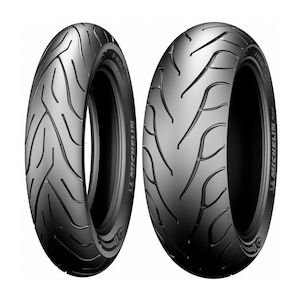
The Commander 3’s improved appearance is due to the Premium Touch technology. The tread grooves on the Commander 3 look deeper than the II’s but are actually the same depth. Michelin contributes to the striations in the III’s tread.
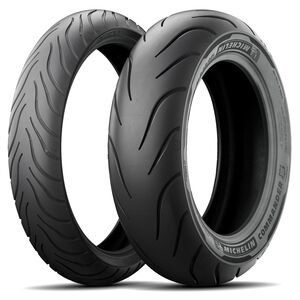
Overall, the Michelin Commander 3 is an improvement over the Michelin Commander 2, with a better ride in the rain and an improved appearance.
Tread Life
Tread life is a crucial factor when comparing the Michelin Commander 2 and Commander 3 tires. Let’s take a closer look at the expected mileage ranges for each tire based on real-world rider experiences and manufacturer claims.
Commander 2 Tread Life
According to rider reports, the Commander 2 rear tire can last anywhere from 8,000 to 25,000 miles, depending on factors such as riding style, motorcycle weight, and road conditions.
Some riders have managed to get 12,000 miles out of a rear Commander 2, which is considered pretty good for a cruiser tire.
However, it’s important to note that the front Commander 2 tire may wear out faster than the rear. One rider reported that their front tire was almost bald at the center while the rear still had decent tread remaining.
Commander 3 Tread Life
Michelin claims that the Commander 3 offers 25% longer tread life compared to competitors like Dunlop and Metzeler.
Real-world experiences suggest that the Commander 3 rear tire can last up to 14,500-15,000 miles before the wear bars are level with the tread.
One potential drawback of the Commander 3 is that some riders have reported cupping (uneven wear) starting as early as 6,000 miles, which can lead to annoying noise by around 10,000 miles.
Benefits of Longer Tread Life
A tire with a longer tread life offers several benefits:
- Cost savings: Replacing tires less frequently means spending less money in the long run.
- Convenience: Longer-lasting tires mean less time spent at the shop getting new rubber installed.
- Safety: A tire with good remaining tread depth provides better grip and handling, especially in wet conditions.
While the Commander 3 seems to have a slight edge in tread life, both tires offer respectable mileage for cruiser-style riding.
Ultimately, the choice between the two may come down to other factors like wet weather performance and handling characteristics.
Handling and Cornering
The Michelin Commander 2 and Commander 3 tires offer distinct handling characteristics that impact a rider’s experience on the road.
Commander 2 Handling
The Commander 2 provides good stability and maneuverability, allowing for confident riding. However, some riders have reported less than optimal grip on wet surfaces with the Commander 2, which could affect cornering confidence in those conditions.
Commander 3 Handling
Michelin has made improvements in the Commander 3’s handling, particularly in wet conditions. The Commander 3 Cruiser variant is rated as the best in its category on wet surfaces, providing excellent grip for cornering. The tire’s profile has been optimized for enhanced steering response.
The Commander 3 Touring tire features Michelin’s Aramid Shield Technology and a new profile that further enhances cornering capabilities.
Riders have reported positive experiences with Commander 3’s handling, noting good grip in both wet and dry conditions.
Feedback and Lean Angles
While both tires offer good overall handling, the Commander 3 seems to have an edge in terms of rider feedback and cornering confidence.
The rounded profile of the Commander 3 Cruiser could contribute to more progressive lean angles and a predictable feel.
It’s important to note that individual riding styles, motorcycle setup, and road conditions can all impact handling performance.
Riders should consider their specific needs and preferences when choosing between the Commander 2 and Commander 3 tires.
Tire Sizes and Fitment
Choosing the right tire size is crucial for optimal performance and safety. Let’s take a look at the available sizes for the Michelin Commander 2 and Commander 3 tires and discuss which motorcycles they’re suitable for.
Commander 2 Sizes
The Commander 2 comes in a variety of sizes to fit different cruiser motorcycles:
- Front sizes: 130/80 B17, 130/90 B16, 140/75 R17, 140/80 B17, 150/80 B16
- Rear sizes: 150/90 B15, 160/70 B17, 170/80 B15, 180/65 B16, 200/55 R17
These sizes are compatible with popular models like the Honda VT 600 C (1993-1999) and certain Harley-Davidson Electra Glide Classic models (2002-2003).
Commander 3 Sizes
The Commander 3 Cruiser variant offers 15 different sizes:
- Front sizes: 130/90 B16, 140/75 R17, 150/80 R16
- Rear sizes: 150/80 B16, 160/70 B17, 180/65 B16, 200/55 R17
These sizes cover a wide range of cruiser and touring motorcycles, including various Harley-Davidson models.
Fitment Considerations
While the Commander 3 is marketed as suitable for all types of V-twin cruisers and touring bikes, some riders have reported fitment issues on certain models.
For example, one owner of a 2021 Harley-Davidson FLHTK experienced vibration issues with the Commander 3 Touring front tire, which Michelin attributed to improper fitment due to fender size, wheel spacing, and load.
It’s important to consult your motorcycle’s owner’s manual or a trusted tire professional to ensure you select the correct tire size for your specific make and model.
Proper fitment not only ensures optimal performance but also helps avoid potential safety issues and premature wear.
When in doubt, err on the side of caution and choose a tire size that your motorcycle manufacturer or a reputable tire specialist recommends.
The right tire size can make all the difference in your riding experience and long-term satisfaction with your Michelin Commander tires.
Stability

One of the key features of both the Michelin Commander 2 and Commander 3 is their ability to provide excellent stability, even at high speeds or during aggressive cornering.
They are designed with advanced compound formulations and reinforced carcass constructions that help maintain a stable footprint on the road surface.
This enhanced stability not only contributes to a confident and controlled riding experience but also improves overall safety, especially during challenging maneuvers or when navigating through varying road conditions.
Michelin Commander 3 Recommended Pressure
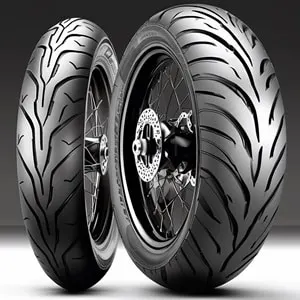
There is no single recommended pressure for Michelin Commander 3 . The recommended pressure can vary depending on the specific bike and riding conditions.
Some riders have reported using 42 psi in the rear, while others have used 35 psi in the front and 40 psi in the rear.
It is important to check the manufacturer’s recommendations and use Michelin’s pressure guide to ensure a safe and comfortable ride.
Michelin Commander 3 Pressure Chart
| Front/Rear | Size | Load/Speed Rating | Tire Type |
|---|---|---|---|
| 80/90 – 21 | 54H | REINF. | TL/TT |
| 140/90 B 15 | 76H | REINF | TL/TT |
| 90/90 – 21 | 54H | TL/TT | |
| 140/80 B 17 | REINF | TL/TT | |
| 100/90 B 19 | 57H | TL/TT | |
| 150/80 B 16 | 77H | TL/TT | |
| 110/90 B 19 | 62H | TL/TT | |
| 160/80 B 16 | 77H | REINF | TL/TT |
| 120/90 B 18 | 71H | REINF | TL/TT |
| 170/80 B 15 | 77H | TL/TT | |
| 140/75 R 17 | 67V | TL | |
| 180/70 B 16 | 77H | TL | |
| 200/55 R 17 | 78V | TL/TT |
Can You Mix Michelin Commander 2 and 3?
According to Michelin, having the same model on your bike is better for better performance. However, some riders have mixed the Michelin Commander II and III and reported no issues.
It is important to note that mixing models may affect the handling of your bike, and it is recommended to consult with a professional before doing so.
What Is the Speed Rating of Michelin Commander 2?
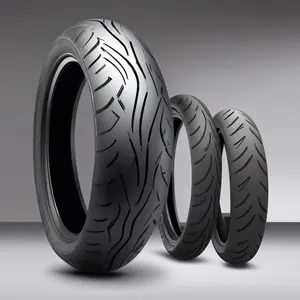
The Michelin Commander 2 has different speed ratings depending on the specific size. For example, the 140/80B-17 69H front tire has a speed rating of H, which means it has a maximum speed of 130 mph. The Michelin Commander 2 has been designed for long-lasting performance and is popular for cruisers.
Michelin Commander Weight Limit
The weight limit for Michelin Commander varies depending on the specific model and size. For example, the Michelin Commander II 240/40R-18 79V rear tire has a maximum limit of 963 pounds.
The Michelin Commander III Touring Rear Tire is 22 pounds. The weight is not the same as the weight limit, which is determined by the load index and speed rating.
To determine the limit, it is important to check the load index and speed rating of the specific model and size.
Wet Grip
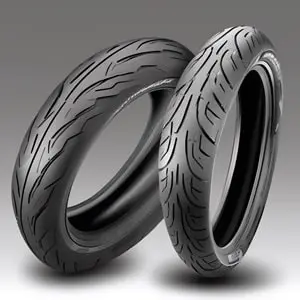
When it comes to wet conditions, having a tire with an excellent wet grip is crucial for maintaining control and safety.
Both the Michelin Commander 2 and Commander 3 tires are engineered with advanced tread compounds and specialized siping (small slits in the tread) that help channel water away from the contact patch, providing an outstanding wet grip.
This enhanced wet grip not only improves traction and stability on wet roads but also helps reduce the risk of hydroplaning, allowing riders to navigate through puddles and rainy conditions with confidence.
Mileage
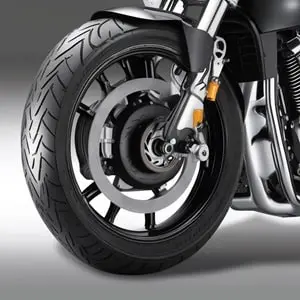
One of the key factors riders consider when choosing motorcycle tires is mileage, as it directly impacts the overall cost of ownership and the frequency of tire replacements.
Both the Michelin Commander 2 and Commander 3 tires are designed to offer excellent mileage, thanks to their advanced compounds and construction techniques.
The Commander 2 tires are known for their impressive longevity, with many riders reporting mileage figures well above the industry average for their respective tire categories.
This exceptional mileage is achieved through Michelin’s proprietary rubber compounds and optimized tread designs, which promote even wear and reduce the rate of tread degradation.
Similarly, the Commander 3 tires have been engineered with an emphasis on mileage, incorporating Michelin’s latest advancements in tire technology.
The combination of long-lasting compounds and reinforced carcass construction ensures that these tires can go the extra mile, providing riders with a reliable and cost-effective solution for their long-distance touring or daily commuting needs.
Whether you opt for the Commander 2 or Commander 3, you can expect to enjoy a substantial mileage lifespan, translating into fewer tire replacements and potentially lower overall ownership costs over the life of your motorcycle.
Pricing and Value
When it comes to choosing between the Michelin Commander 2 and Commander 3 tires, price and overall value are important considerations.
Let’s take a closer look at the cost of these tires and how they compare in terms of performance and features for the money.
Commander 2 Pricing
The Commander 2 is generally less expensive than the Commander 3. In the UK, a pair of Commander 2 tires (front and rear) can cost around £250-£300, depending on the specific sizes.
This makes the Commander 2 an attractive option for budget-conscious riders who still want a quality tire from a reputable brand like Michelin.
Commander 3 Pricing
The Commander 3 comes with a higher price tag, reflecting its newer technology and improved performance. A pair of Commander 3 Cruiser tires start at around £350 in the UK.
In the US, a front Commander 3 tire starts at $180.99, while a rear tire begins at $210.99. The touring variant of the Commander 3 ranges from £171.03 to £265.34 per tire, depending on the size.
Value Proposition
While the Commander 3 is more expensive, it offers several advantages that could justify the higher price for some riders:
- Improved wet weather performance
- Potentially longer tread life (up to 25% more than competitors)
- Enhanced stability and handling
However, the Commander 2 still provides excellent value for its lower price point. It offers good handling, stability, and a long tread life of its own (some riders report getting over 25,000 miles before needing replacement).
Cost Per Mile
Considering the cost per mile, the Commander 2 might come out ahead for riders on a tighter budget. If we assume a conservative tread life of 15,000 miles for a pair of Commander 2 tires costing £300, the cost per mile would be around £0.02.
The Commander 3, with its higher price and potentially longer tread life, could even out in the long run, but the upfront cost may be a barrier for some.
Ultimately, the choice between the Commander 2 and Commander 3 comes down to your specific needs, riding style, and budget.
Both tires offer good value in their respective price ranges, but the Commander 3’s advanced features and performance may be worth the extra investment for riders who prioritize wet weather grip and handling.
Is the Michelin Commander 2 Tubeless?
The Michelin Commander 2 is typically tubeless in all sizes, but tubes are available if required.
The Michelin website and other sources do not explicitly state whether the Commander 2 is tubeless or not, but they do not mention tubes either, which suggests that it is tubeless.
For the best prices on either the Commander II or the Commander III, click here.
Previous Article: Benefits Of Run-Flat Tires
Next Article: Shinko 777 Cruiser Tires Review